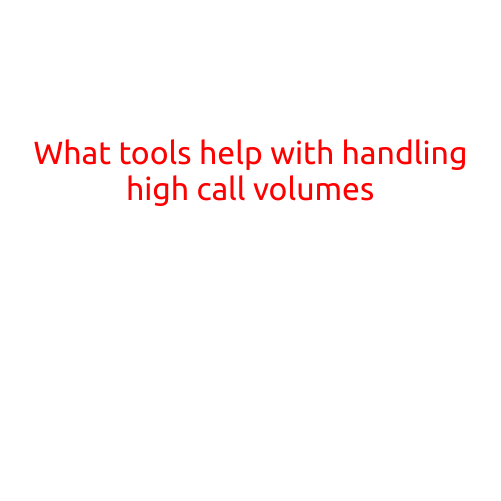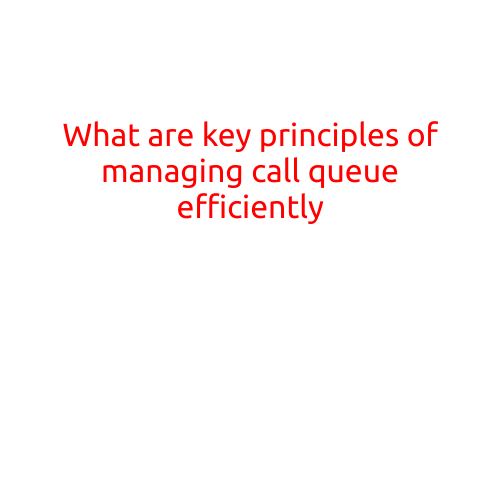
What Tools Help with Handling High Call Volumes
Handling high call volumes can be a significant challenge for customer service teams. In today’s fast-paced business environment, customers expect prompt and efficient support, and missed calls or long wait times can lead to lost revenue, damaged reputations, and decreased customer satisfaction.
To ensure that your team can efficiently handle a high volume of calls, it’s essential to have the right tools and strategies in place. In this article, we’ll explore some of the most effective tools that can help you manage high call volumes and provide exceptional customer experiences.
1. Automatic Call Distribution (ACD) Systems
ACD systems are designed to distribute incoming calls to available agents in a predetermined sequence. This ensures that calls are answered quickly and efficiently, reducing the likelihood of missed calls and long wait times. ACD systems can also be programmed to prioritize calls based on their urgency or complexity, ensuring that critical calls receive immediate attention.
2. Interactive Voice Response (IVR) Systems
IVR systems enable callers to interact with your customer service team through voice prompts and keypad entries. This can help to triage calls and route them to the most suitable agent or department, reducing the number of calls that require human intervention. IVR systems can also handle routine inquiries, such as password reset requests or order tracking information.
3. Predictive Analytics
Predictive analytics software can help you anticipate and prepare for high call volumes by analyzing historical data and trending patterns. This enables you to proactively adjust your staffing levels, training programs, and communication strategies to ensure that you’re equipped to handle increased call volumes.
4. Cloud-Based Contact Center Solutions
Cloud-based contact center solutions offer greater scalability and flexibility than traditional on-premise systems. These solutions enable you to add or remove agents, as needed, to match fluctuating call volumes. Cloud-based solutions also provide real-time monitoring and analytics, enabling you to optimize your call handling processes and improve customer satisfaction.
5. Omni-Channel Contact Handling
As customers increasingly engage with businesses through multiple channels, such as voice, email, chat, and social media, it’s essential to have an omni-channel contact handling solution in place. This enables customers to switch seamlessly between channels, while ensuring that agents have access to a single, unified view of the customer’s interaction history.
6. Workforce Management (WFM) Software
WFM software helps you schedule and manage your contact center agents more effectively. This involves forecasting and scheduling, as well as real-time monitoring and adjustment of staffing levels to match fluctuating call volumes.
7. Callback Services
Callback services are designed to reduce wait times and minimize the number of abandoned calls. These services allow agents to proactively call customers back, rather than requiring customers to wait for an available agent.
8. Real-Time Monitoring and Analytics
Real-time monitoring and analytics enable you to track key performance indicators (KPIs), such as call answer rates, handle times, and customer satisfaction scores. This helps you identify areas for improvement, fine-tune your processes, and optimize your call handling efficiency.
9. Self-Service Portals
Self-service portals allow customers to handle simple transactions, such as billing inquiries or order tracking information, without the need for human intervention. This not only reduces the volume of calls but also frees up agents to focus on more complex, high-touch issues.
10. Employee Engagement and Training
Finally, it’s essential to invest in employee engagement and training programs that enable your agents to provide exceptional customer experiences. This includes ongoing training, coaching, and incentives to promote agent performance and motivation.
In conclusion, handling high call volumes requires a combination of effective tools, strategies, and employee training. By implementing these tools and best practices, you can ensure that your customer service team is equipped to provide exceptional service, even during periods of high call volume.





